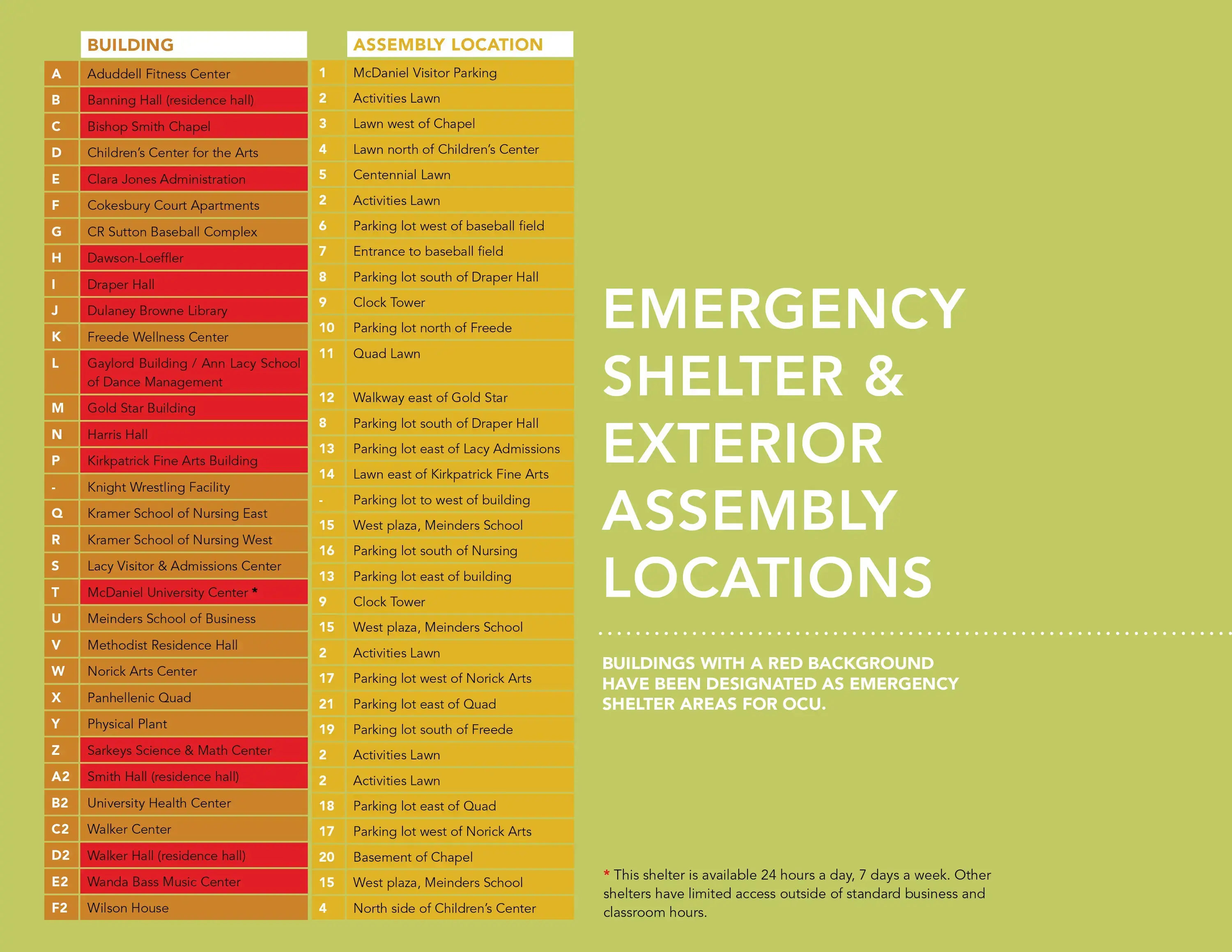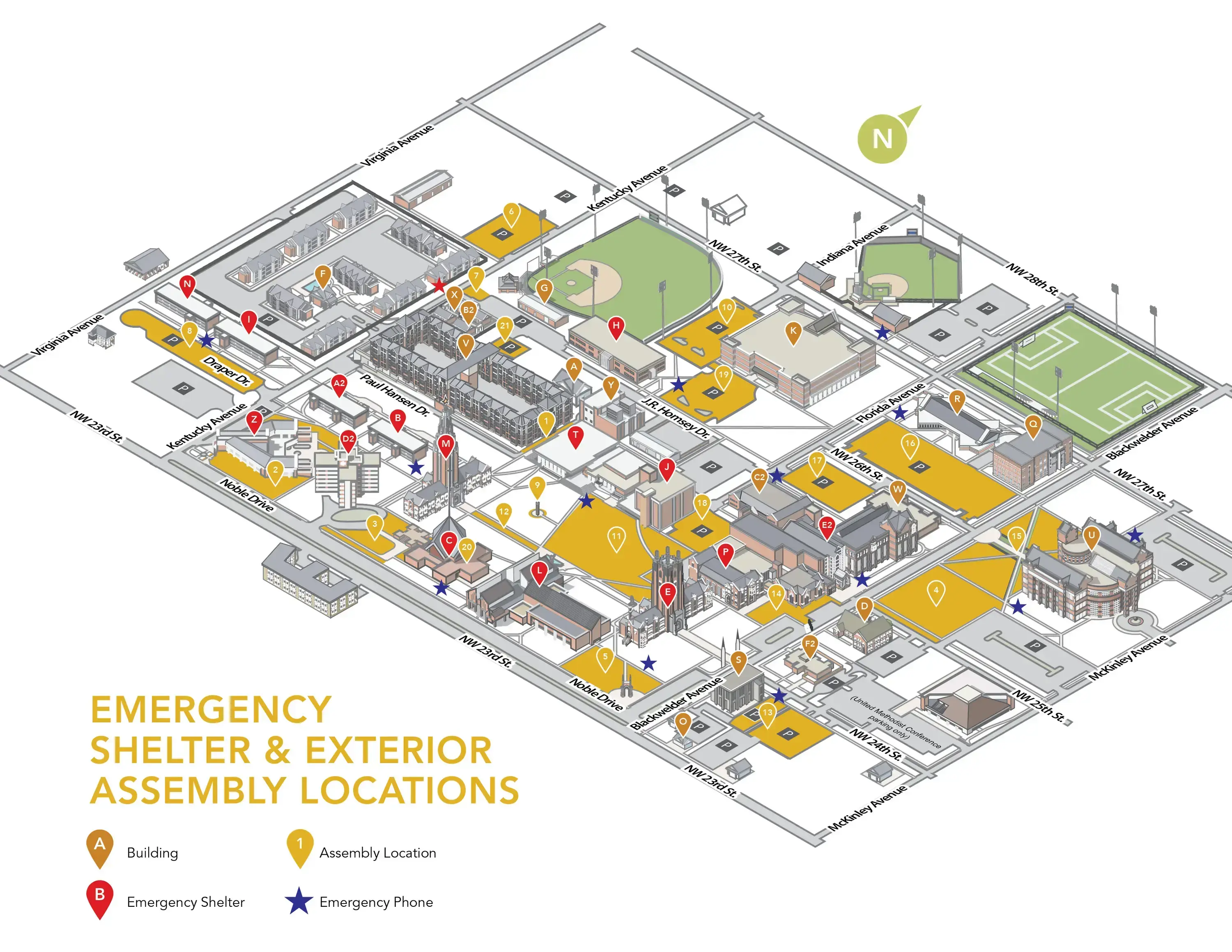 |
- Faculty, staff, and students may witness a response by University Police to a situation requiring police presence within your building. In the event of a building-wide emergency, Police Officers may direct you to either stay in your office or classroom, not enter the building, or to leave the building immediately.
- If you are contacted by a police officer, ALWAYS follow their instructions, as you may not know the reason that an officer is giving you instructions, or what danger(s) may exist. Failure to follow officer instructions could endanger your life as well as the lives of others, and could lead to your arrest for failing to comply with the officers' instructions.
- Do not run from a police officer when contacted or instructed in any way. This could lead to injury to you or others, or enforcement action being initiated against you.
- Use the ‚ÄúNeutral Question Position‚ÄĚ‚Äď hands forward and palms up like asking a question ‚Äď when confronted by officers. This allows them to see your hands and scan quickly for weapons (they don‚Äôt know you‚Äôre not the ‚Äúbad guy‚ÄĚ until they identify you).
- Some buildings contain security or life and safety alarm systems that when activated, in most cases, require Police response. Until the alarm is proven to be false, police respond as if there is an actual intrusion, or emergency. Even if you know the alarm to be false, you must STILL follow all instructions from responding police officers as well as any protocols that have been established for an alarming system within your building.
- In any event, where University Police have been dispatched to your building, the Police will follow up by contacting responsible parties within the affected building to explain the response, even in the event of a false alarm. Those contacted may include department head(s), dean(s), or building coordinators who will then be responsible for determining who/when to distribute information regarding the police response to a given situation. It will be the responsibility of each building to provide 24/7 contact information for those responsible parties to the Police Department, as well as update that information as necessary.
 |
In Case of Fire
- Pull the red fire alarm. An alarm will ring at ļž–”÷Ī≤•app police. University Police will call the Fire Department.
- If there is immediate danger, remain calm and follow evacuation procedures, and then call the University Police Department at 5911 from a nearby building.
- If there IS NOT an immediate danger, call the University Police Department at 5911.
- If calling 911 from a cell phone, the call will go to the ļž–”÷Ī≤•app City Police Dispatch Center. Immediately identify your location as at ļž–”÷Ī≤•app and you will be transferred to ļž–”÷Ī≤•appPD Dispatch. To reach the University Police Department directly from a cell phone, call 405-208-5911.
- Follow the evacuation plan. Listen for directions and congregate at the designated area. Faculty and lab assistants will account for students.
If You Are Trapped in a Building
- If the door to the room you are in is hot to the touch and/or smoke is seeping in, DO NOT OPEN IT.
- Remain calm. Walls, ceilings, floors, and doors are designed to withstand fire for a safe period of time.
- Pack the crack under the door with clothing or other material to keep smoke out.
- Let someone know you are trapped. Call 5911/911 and stay on the line until the dispatcher tells you to hang up. If there is no phone available, yell out the window or wave out the window to gain attention.
- If calling 911 from a cell phone, the call will go to the ļž–”÷Ī≤•app City Police Dispatch Center. Immediately identify your location as at ļž–”÷Ī≤•app and you will be transferred to ļž–”÷Ī≤•appPD Dispatch. To reach the University Police Department directly from a cell phone, call 405-208-5911.
- Stay low to the floor near the window as the smoke will fill higher areas first.
- FIRE EXTINGUISHERS ARE TO BE USED ONLY TO PUT OUT SMALL FIRES. DO NOT ATTEMPT TO FIGHT LARGE FIRES. YOU ARE NOT REQUIRED TO FIGHT FIRES, ONLY REPORT THEM.
 |
In Case of a Medical Emergency
- Remain calm. Call 911 and stay on the line until the dispatcher tells you to hang up.
- If calling 911 from a cell phone, the call will go to the ļž–”÷Ī≤•app City Police Dispatch. Immediately identify your location as at ļž–”÷Ī≤•app and you will be transferred to ļž–”÷Ī≤•appPD Dispatch. To reach the University Police Department directly from a cell phone, call 405-208-5911.
- Send an individual to meet the ambulance.
- Do NOT move the victim or give first aid unless you are trained and certified to do so.
- Remain with the victim and try to keep the victim warm and alert by talking with them until emergency response teams arrive.
 |
Tornado/Severe Storm
- Proceed to the nearest interior room at the lowest level of the building or a designated tornado shelter area and close the door. If at all possible have a phone, radio, flashlights, and first aid kits available.
- Refer to the list at the back of the guide for the list of shelter locations.
- Contact University Police at 5911/911.
- If calling 911 from a cell phone, the call will go to the ļž–”÷Ī≤•app City Police Dispatch. Immediately identify your location as at ļž–”÷Ī≤•app and you will be transferred to ļž–”÷Ī≤•appPD Dispatch. To reach the University Police Department directly from a cell phone, call 405-208-5911.
- Monitor the storm by listening to the radio. DO NOT LEAVE THE TORNADO SHELTER AREA UNTIL TOLD TO DO SO. University Police and the ļž–”÷Ī≤•app City Fire Department will be making rounds throughout campus determining damages and will contact you when it is safe to leave the building. This may take a while, so remain in the designated area until you are contacted to leave. There may be structure damage.
PLEASE NOTE
Tornadoes have been known to leave the ground and come back down again in a matter of minutes or even as long as half an hour. Remain in the designated area until notified by the University Police or ļž–”÷Ī≤•app City Fire Department that it is safe to leave.
 |
In Case of Earthquake
- Remain calm. Take cover under heavy furniture ‚ÄĒ a table, desk, or bench or within a doorway ‚ÄĒ and away from glass.
- Wait for the quake or tremor to subside and all falling objects to come to rest.
- For small quakes and tremors with NO apparent damage, return to normal activities. Building Coordinators will survey the entire building for possible damage such as: leaking pipes, fallen books, etc. All Coordinators will report damages to the University Police.
- If damage appears heavy, evacuate ONLY when notified by University Police that it is safe to leave.
- In the case of an evacuation, proceed immediately to the designated area.
- Stay away from electrical power sources, fallen lines, buildings, or other tall objects.
- Do NOT smoke. Gas lines may have ruptured.
 |
Interior Flooding
- Remain calm. Immediately evacuate the affected area.
- Report to designated area.
- Call Facilities at 405-208-5383 or 405-464-5448 for assistance in having water shut off.
- Call University Police at 5911/911 from a nearby building and have the following information available; where the flooding occurred, if there are any injuries and stay on the line until you are told to hang up.
- If calling 911 from a cell phone, the call will go to the ļž–”÷Ī≤•app City Police Dispatch. Immediately identify your location as at ļž–”÷Ī≤•app and you will be transferred to ļž–”÷Ī≤•appPD Dispatch. To reach the University Police Department directly from a cell phone, call 405-208-5911.
- Stay away from all power (electrical) sources and utility vaults.
Exterior Flooding
- Remain calm. Call University Police at 911 and let them know what building you are in, how high the water is, and how many people are with you.
- If calling 911 from a cell phone, the call will go to the ļž–”÷Ī≤•app City Police Dispatch. Immediately identify your location as at ļž–”÷Ī≤•app and you will be transferred to ļž–”÷Ī≤•appPD Dispatch. To reach the University Police Department directly from a cell phone, call 405-208-5911.
- If there is water all around the building, proceed to the roof of the building or the highest point accessible.
- If there is water on only one side of the building, proceed in an orderly fashion out of the building exit that has NO water.
- Immediately go to the highest area possible.
 |
Armed Person or Shooter
- Quickly determine the most reasonable way to protect your own life. Remember that students and visitors are likely to follow the lead of faculty and staff during an active shooter situation.
- Evacuate. If there is an accessible escape path, attempt to evacuate the premises. Be sure to:
- Have an escape route and plan in mind
- Evacuate regardless of whether others agree to follow
- Leave your belongings behind
- Help others escape, if possible
- Prevent individuals from entering an area where the active shooter may be
- Keep your hands visible
- Follow the instructions of any police officers
- Do not attempt to move wounded people
- Call 5911/911 when you have reached a safe location
- Hide out. If evacuation is not possible, find a place to hide where the active shooter is less likely to find you. Your hiding place should:
- Be out of the active shooter’s view
- Provide protection if shots are fired in your direction (e.g., an office with a closed and locked door)
- Not trap you or restrict your options for movement
Prevent an Active Shooter From Entering Your Hiding Place
- Lock the door
- Blockade the door with furniture
What to do if the Active Shooter is Nearby
- Lock the door
- Silence personal electronics
- Turn off any source of noise (i.e., radios, televisions)
- Hide behind large items (i.e., cabinets, desks)
- Remain quiet
If Evacuation or Hiding Out are not Possible
- Remain calm.
- Dial 5911/911, if possible, to alert police to the active shooter’s location
- If you cannot speak, leave the line open and allow the dispatcher to listen in.
- Take action against the active shooter. As a last resort, and only when your life is in imminent danger, attempt to disrupt and/or incapacitate the active shooter by:
- Acting as aggressively as possible against him/her
- Throwing items and improvising weapons
- Yelling
- Committing to your actions
- Law enforcement’s purpose is to stop the active shooter as soon as possible. When officers first arrive, they will proceed directly to the area in which the last shots were heard.
- Officers usually arrive in teams of four (4)
- Officers may wear regular patrol uniforms or external bulletproof vests, Kevlar helmets, and other tactical equipment
- Officers may be armed with rifles, shotguns, handguns
- Officers may use pepper spray or tear gas to control the situation
- Officers may shout commands, and may push individuals to the ground for their safety
- When law enforcement arrives:
- Remain calm, and follow officers’ instructions
- Put down any items in your hands (i.e., bags, jackets)
- Immediately raise hands and spread fingers
- Keep hands visible at all times
- Avoid making quick movements toward officers (i.e. attempting to hold on to them for safety)
- Avoid pointing, screaming and/or yelling
- Do not ask officers for help or direction when evacuating, just proceed in the direction from which officers are entering the premises
- Information to provide to law enforcement or 5911/911 emergency operators:
- Location of the active shooter
- Number of shooters, if there is more than one
- Physical description of shooter/s
- Number and type of weapons held by the shooter/s
- Number of potential victims at the location
REMEMBER
The first officers to arrive to the scene will not stop to help injured persons. Expect rescue teams comprised of additional officers and emergency medical personnel to follow the initial officers. These rescue teams will treat and remove any injured persons. They may also call upon able-bodied individuals to assist in removing the wounded from the premises.
Once you have reached a safe location or an assembly point, you will likely be held in that area by law enforcement until the situation is under control, and all witnesses have been identified and questioned. DO NOT LEAVE THE SAFE LOCATION OR ASSEMBLY POINT UNTIL LAW ENFORCEMENT AUTHORITIES HAVE INSTRUCTED YOU TO DO SO.
 |
Hazmat Spill
All laboratories should be equipped with spill kits for the appropriate materials being used in the laboratory (acids, bases, mercury, etc.).
Suspicious Odors (Indoor Air Quality)
Unusual odors or smells from rooms other than kitchen or bathroom areas should be reported to the Building Coordinator or their backup immediately for Risk Management to evaluate. This is especially true in laboratory, chemical storage or hazardous materials area and buildings.
Do NOT stay in the area! Identify persons who may have been exposed to any dangerous fumes for medical follow-up.
Bench-Top Spills
A bench-top spill is defined as a spill that will not contaminate the water supply, sewer, air handling system, or any other area, is small enough to be easily handled by staff, and there are NOT any injuries.
- Remain calm. Contain the spill with absorbent pillows.
- Consult the Materials Safety Data Sheet (MSDS).
- If you are familiar with handling the spilled reagent, obtain the proper spill kit and follow the directions that are with the spill kit.
- Notify the Lab Director for the laboratory.
- Dispose of all adsorbent according to the ļž–”÷Ī≤•app Department of Environmental Quality requirements. If you are not familiar with the spilled reagents or you do not feel comfortable cleaning up the spill, follow instructions for large spills.
Large Spills
A large spill is defined as a spill that may contaminate the water supply, sewer, air handling system, or any other area; is too large to be easily handled by staff; and/or there are injuries.
- Remain calm. Only if there is NO immediate danger; call 5911/911 and have the following information available for the dispatcher:
- where the spill occurred;
- what was spilled;
- how much was spilled;
- when the spill occurred; and
- if there are any injuries.
- If calling 911 from a cell phone, the call will go to the ļž–”÷Ī≤•app City Police Dispatch Center. Immediately identify your location as at ļž–”÷Ī≤•app and you will be transferred to ļž–”÷Ī≤•appPD Dispatch. To reach the University Police Department directly from a cell phone, call 405-208-5911.
- Remember to call the Lab Director for the laboratory.
 |
Bomb Threat Emergency Special Instructions
More than 95% of all bomb threats are hoaxes. However, there is always the chance the threat may be real. Therefore, appropriate action should be taken in each instance. In case of a bomb threat, the following procedure shall be followed.
- Immediately notify the ļž–”÷Ī≤•app City University Police Department by using a landline to dial 208-5911 (the use of cell phones may trigger a device).
- The ļž–”÷Ī≤•app City University Police Department will assess the threat, and will notify building occupants.
- Each employee should, when directed to by the ļž–”÷Ī≤•app City University Police Department:
- Quickly observe his/her work area for any unfamiliar objects.
- DO NOT TOUCH ANY SUSPICIOUS OBJECT.
- Note its location and report it to the police.
- When directed, follow the General Evacuation Procedures.
- Do not try to locate the bomb, and do not try to move the bomb if found.
- Avoid all suspected objects.
- Move to and remain in the evacuation area. No one shall leave the area or attempt to re-enter the building without permission from an officer.

EMERGENCY SHELTER LOCATIONS
The following is a list of Emergency Shelter and Exterior Assembly Locations for the OKCU Campus
List of Emergency Shelter and Exterior Assembly Locations for the ļž–”÷Ī≤•app Campus (Text Version)
OKLAHOMA CITY UNIVERSITY - EMERGENCY SHELTER LOCATIONS
Banning Hall (Residence hall)
Bishop Smith Chapel
Clara Jones Administration Building
Dawson-Loeffler
Draper Hall
Dulaney-Browne Library
Freede Wellness Center
Gaylord Building/Ann Lacy School of Dance Management
Gold Star Building
Harris Hall
Kirkpatrick Fine Arts Building
McDaniel University Center (This shelter is available 24 hours a day)
Sarkeys Science & Math Center
Smith Hall (residence hall)
Wanda Bass Music Center

EMERGENCY SHELTER MAP
The following is a map of ļž–”÷Ī≤•app's Emergency Shelter and Exterior Assembly Locations

